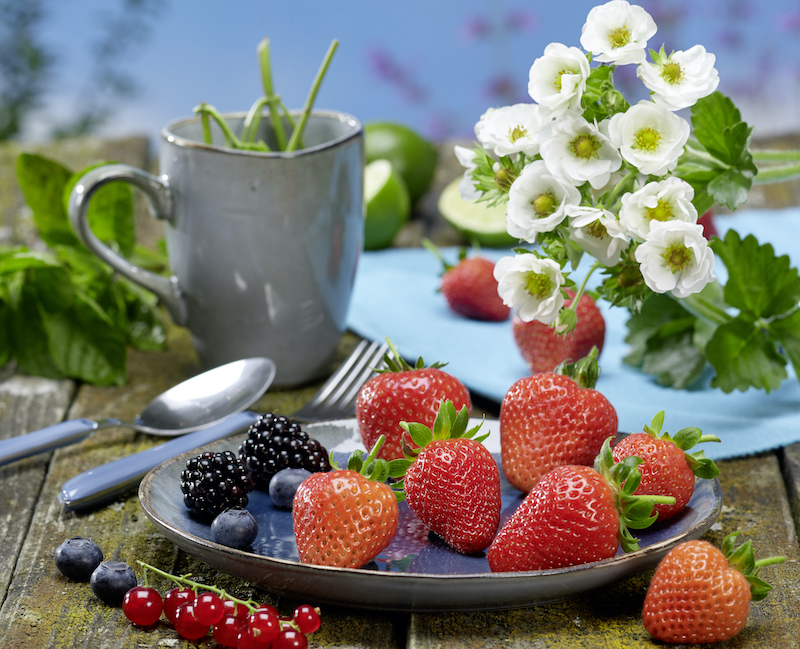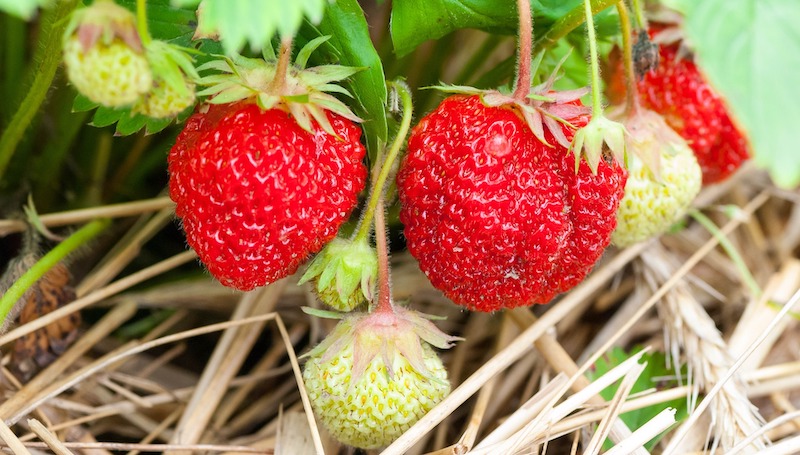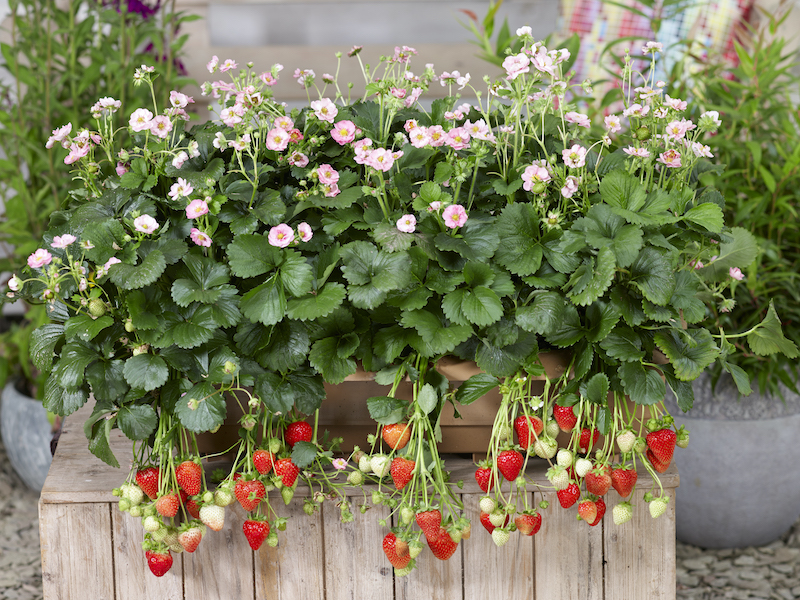Strawberries, perhaps the most welcome fruit of early summer for many, are fairly easy to incorporate into the home landscape. The garden strawberry, a hybrid within the genus Fragaria, typically grows 6 to 8 inches tall with a spread of 12 inches, although they can overtake areas quickly because of their spreading habit. Fruit timing varies depending on the type of strawberry, with June-bearing types fruiting in early summer and everbearing and day-neutral types producing over a longer period of time.

Caring For Strawberry Plants
Full sunlight, regular moisture, and routine pruning are the most important requirements for this recognizable garden plant. Strawberries spread by stolons, above-ground horizontal stems that produce daughter roots and shoots. These can be cut from the mother plant to encourage fruit production and themselves cultivated as separate plants.
Remove flowers for the first several weeks following planting to encourage plant establishment. Regularly weed strawberry beds to reduce competition and encourage maximum fruit production. Once strawberries go dormant in the fall in cold climates, apply straw mulch at a depth of 4 inches to protect the plant from extreme cold weather. Rake the mulch off of these plants once new growth emerges in spring.
Planting Strawberry Plants
The ideal position for strawberry plants receives at least 10 hours of direct sunlight, but they can survive with as little as 6 hours of sun each day. Space multiple plants about 18 to 24 inches apart and keep rows about 3 feet apart. The best time of year to plant strawberries is as soon as soil is workable in spring.
Position each plant so that soil covers the top of the root mass but not the plant’s crown. Strawberries prefer sandy loam soils that have excellent drainage and a pH between 6 and 6.5. In sites with a high clay content or poor drainage, work ample organic matter into the soil prior to planting or plant strawberries using a hill system or raised bed.

Watering Strawberry Plants
Water in strawberry plants gently and thoroughly at planting to settle soil around the roots. Keep the soil around the plants evenly moist during establishment, or until sufficient new growth appears. Strawberry plants typically require one inch of water weekly throughout the growing season. Monitor plants closely during fruit development. Whenever rainfall is not sufficient, water the strawberry plants slowly each week to wet the top 8 inches of soil.
Fertilizing Strawberry Plants
Unlike many plants, strawberries do not appreciate a spring fertilization with nitrogen unless a soil test indicates otherwise or plants show signs of a nitrogen deficiency. Spring feeding can lead to vigorous vegetative growth that is more vulnerable to disease and soft berries. Instead, time an annual fertilization for mid-summer.
Apply a balanced fertilizer like a 10-10-10 NPK formula around the base of the plants according to label directions. On very sandy soils or when the rainfall amount has been above average, keep an eye out for nutrient deficiency in the form of slow growth or light green foliage. A supplemental application may be called for in this situation.
Growing Strawberry Plants In Pots
Strawberries are excellent candidates for container growing. They feature a relatively small root mass, but require a container at least 8 to 10 inches wide and 8 inches deep. Make sure any container has plenty of drain holes. Use high-quality potting soil or a mixture of potting soil and well-rotted compost.
Close monitoring and regular watering is critical, as container-grown plants are particularly vulnerable to drying out. With container plants, the runners will often hang over the edge of the pot. As with plants in the ground, removing these runners will force the plant to channel energy into fruit production.

Harvesting Strawberry Plants
Strawberry plants can flower and fruit during the first year following planting, but will perform best in the long term if flowers are removed the first year. Timing of harvest will vary depending on the type of strawberry. June-bearing strawberries, as the name suggests, produce fruit for a 3-6 week period in early summer. Day-neutral strawberries yield fruit from mid-summer through early fall. Regardless of the type of strawberry, harvesting every one to three days encourages continual yield and reduces the potential for problems with pests and disease. Fruit flavor is optimal when the berry is fully red, with no signs of white.
 |
Author Angela Ryczkowski - Published 3-09-2023 |
